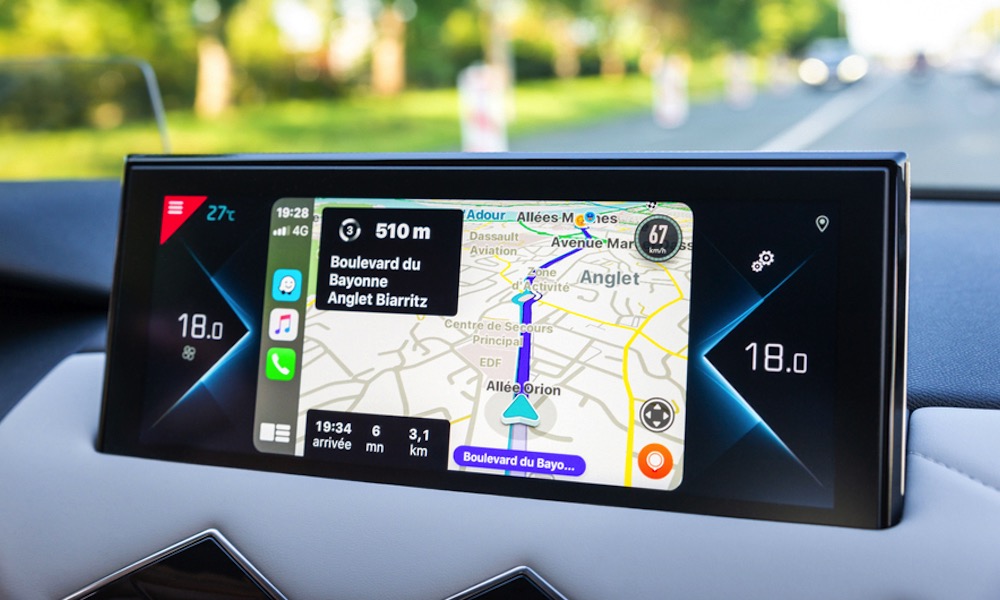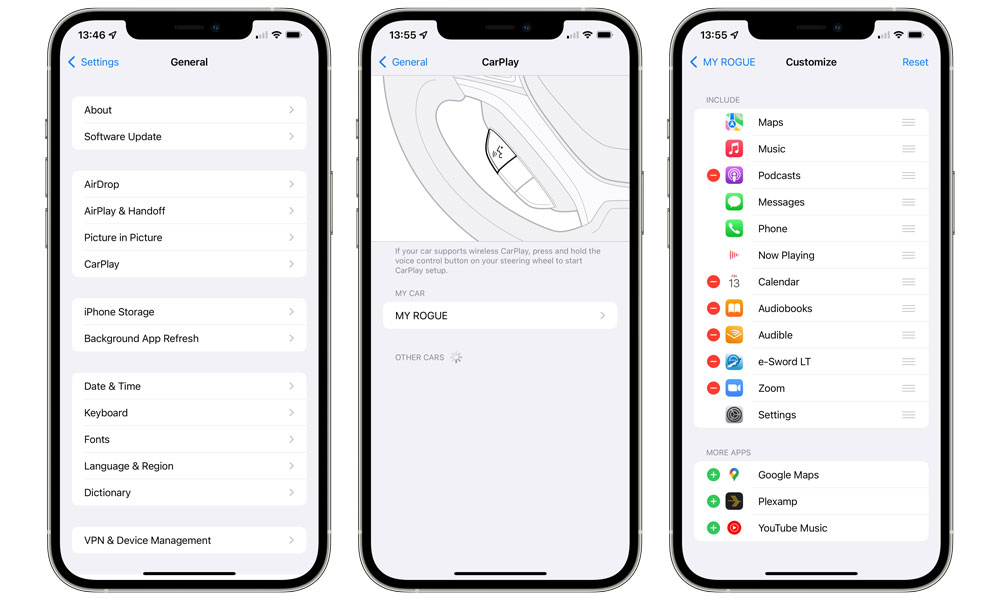This Is Why You Can’t Use Some of Your Favourite Apps with CarPlay
 Credit: Thomas Dutour / Shutterstock
Credit: Thomas Dutour / Shutterstock
Toggle Dark Mode
For now at least, there’s little doubt that Apple’s CarPlay is one of the company’s greatest innovations in the automotive space. It brings the usability of your iPhone to your car’s dashboard in a clean and clutter-free interface along with some advanced Siri features.
While Apple has enhanced CarPlay quite a bit from its humble beginnings back in 2014 — and will continue to do so in iOS 15 — there are certainly times when the interface can seem a bit limiting compared to what you can do directly on your iPhone.
To be clear, however, this isn’t simply because Apple can’t be bothered to add more capabilities to CarPlay. It’s actually a deliberate decision on the company’s part to keep the system simple, and most importantly, safe.
For instance, we’ve often been asked by readers why Apple doesn’t allow you to watch videos using CarPlay, especially considering that Android Auto does leave this possibility open. It’s a question that highlights the difference between Android’s more “open” approach and Apple’s tightly controlled ecosystem.
From Apple’s perspective, CarPlay is about safety first, and to that end it strictly controls what apps can be used via CarPlay. As nice as it might be to watch a video when you’re safely parked, Apple doesn’t want to have any part in encouraging users to try and catch up on the latest episode of Ted Lasso while they’re speeding along the I-95.
To be fair, even Android Auto doesn’t officially allow for this, but the open nature of Android has allowed many developers to figure out ways to work around it, since there are far fewer restrictions on the apps that can be placed on your dashboard.
What Apps Can You Use with CarPlay?
By contrast, Apple very strictly regulates CarPlay apps to only a few very specific categories:
- Audio: Apps that primarily provide audio content, including Apple’s own Music and Podcasts app along with others like Amazon Music, Audible, Spotify, YouTube Music, Tidal, and Overcast. Apps that provide secondary audio capabilities can also be included here, such as reading apps that offer audio narratives and stories as well, like Apple’s News+ Audio and even MLB.com’s At Bat.
- Communication: This includes messaging and voice-over-IP apps, provided they’re capable of being used entirely via Siri. Apple’s Phone and Messages are obviously built-in, but you can also use others like Zoom, Telegram, and WhatsApp.
- EV charging: Introduced last year in iOS 14, these allow users to get information about nearby electric vehicle charging stations. Examples include ChargePoint, ChargeMap, and PlugShare.
- Navigation: Apple Maps is the obvious main entry here, but Apple did expand support in iOS 12 to allow Google Maps and others to get a spot on the dashboard.
- Parking: Another iOS 14 addition, parking apps allow drivers to find nearby parking services, and in some cases even pay for parking. Examples include EasyPark and SpotHero.
- Quick Food Ordering: Also added in iOS 14, this allows developers to extend apps designed for ordering drive-thru and takeout from Quick Service Restaurants (QSR). They’re intended to show a simplified menu, such as recent orders or favourites, and show nearby locations in a map view. This one doesn’t seem to have been picked up as widely as we’d like, but the Dunkin’ app is one example.
In addition to the six categories above, Apple is very firm on how these apps work and what they can do via CarPlay. For example, the new EV Charging, Parking, and Quick Food Ordering apps must “provide meaningful functionality relevant to driving” such as showing nearby locations, rather than just a list, and the map views must only show specifically relevant locations.
Similarly, audio apps can’t display lyrics on the CarPlay screen, and they also can’t use text-to-speech systems. “Reader” apps are permitted only if they actually play back human-recorded audio.
Communication apps must function via Siri, and must not display the actual messages on the CarPlay screen. Further, only short text messaging apps are permitted — not things like email apps.
Users must also never be instructed to pick up their iPhone to complete a task. Everything must be doable directly from CarPlay, either via the in-car touch screen or by using Siri.
While there are still categories we’d like to see Apple add to this list — weather apps would be particularly useful, for example — don’t expect the company to open the floodgates to let just anybody onto your dashboard.
Notifications in CarPlay
Similarly, Apple is very restrictive about what notifications can be shown on the CarPlay screen. While CarPlay apps are allowed to show relevant notifications, such as incoming messages and turn-by-turn navigation instructions, only Apple’s own Reminders, News, and Home apps can break through with notification banners from their iPhone counterparts.
In fact, if you go into your Notification settings in the iPhone Settings app, you’ll notice that these apps have an extra “Show in CarPlay” option underneath the usual Banner Style, Sounds, and Badges settings. You’ll also find similar settings for some CarPlay-enabled apps such as Apple’s own Calendars, Maps, Messages, FaceTime, and Phone, and even third-party apps like Zoom and WhatsApp.
These are on by default, but you can toggle them off if you prefer not to receive notifications from these apps while driving.
How to Add and Arrange CarPlay Apps on Your Dashboard
It’s actually possible to add, remove, and rearrange the order of CarPlay apps on your dashboard, but the catch is that you have to do this using your iPhone.
- Open the Settings app on your iPhone.
- Tap General.
- Tap CarPlay.
- Tap the name of your car.
- Tap Customize.
Depending on what apps you have installed, the customization screen may be divided into two sections. The top section lists those apps that are included on your CarPlay dashboard, while the bottom shows other available apps that you can add.
- You can reorder the apps on your CarPlay display simply by dragging them up and down the list using the control handles on the right side.
- You can also remove them entirely by dragging them right down into the lower section, or by simply tapping the red minus button to the left of each one.
- Similarly, you can add apps from the bottom section by tapping the green plus button beside them.
Removing an app from your CarPlay display won’t affect the version that’s installed on your iPhone, although obviously if you remove the app from your iPhone entirely, it won’t be available in CarPlay either.
Also note that most of Apple’s built-in apps — Maps, Music, Messages, Phone, Now Playing, and Settings — can’t be removed, although you can remove Calendar and Audiobooks, which is the CarPlay version of the iPhone Books app.







